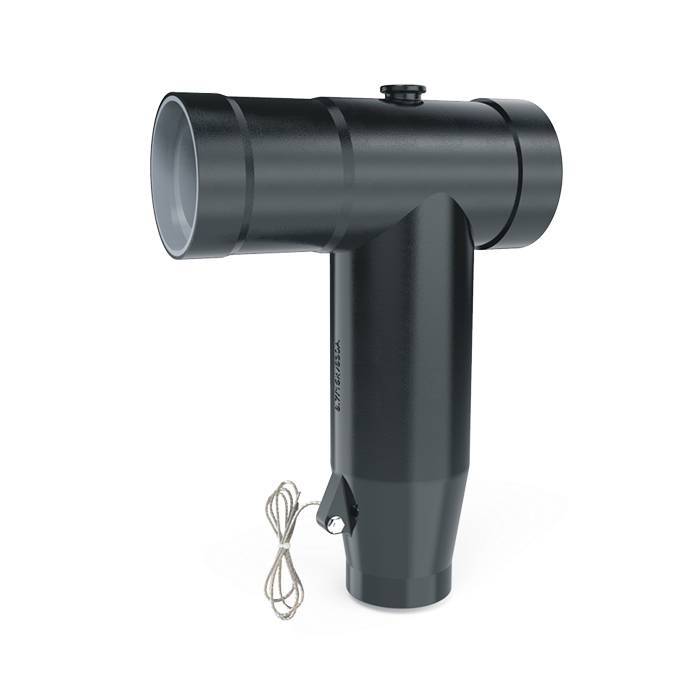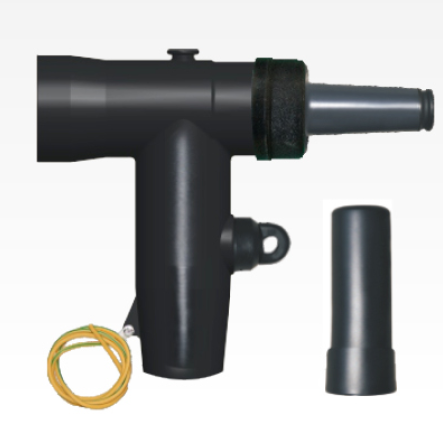The electrical power distribution industry stands at a critical juncture where traditional cable infrastructure meets cutting-edge digital technology. Smart Cable Accessories represent an evolutionary leap in how power systems monitor, protect, and optimize electrical distribution networks. These intelligent components integrate sensors, communication protocols, and data analytics capabilities directly into cable terminations, joints, and protective equipment, creating a comprehensive monitoring ecosystem that transforms passive electrical infrastructure into active, responsive systems.
Modern power distribution networks face unprecedented challenges including aging infrastructure, increasing load demands, environmental pressures, and the critical need for enhanced reliability. Traditional cable accessories, while reliable, operate as passive components that provide limited insight into system performance, health status, or impending failures. The integration of smart technology into cable accessories addresses these limitations by providing real-time monitoring, predictive maintenance capabilities, and enhanced operational visibility that significantly improves system reliability and reduces maintenance costs.
The adoption of intelligent cable accessories aligns with broader industry trends toward digitalization, IoT integration, and predictive maintenance strategies. Utility companies and industrial facility operators increasingly recognize that proactive monitoring and data-driven maintenance approaches deliver substantial operational and financial benefits compared to traditional reactive maintenance models. This technological evolution represents a fundamental shift in how electrical infrastructure operates and maintains optimal performance throughout its operational lifecycle.
Fundamental Technology Components
Sensor Integration and Monitoring Capabilities
The core technology foundation of Smart Cable Accessories lies in sophisticated sensor integration that continuously monitors critical electrical and environmental parameters. Temperature sensors embedded within cable joints and terminations provide real-time thermal monitoring, enabling early detection of hotspots that often precede catastrophic failures. These sensors utilize advanced materials and miniaturized designs that maintain accuracy while withstanding harsh electrical environments and extended operational periods.
Partial discharge monitoring represents another crucial sensing capability that detects insulation degradation before it progresses to complete failure. Advanced acoustic and electrical sensors identify the characteristic signatures of partial discharge activity, enabling maintenance teams to schedule interventions during planned outages rather than responding to emergency failures. This capability proves particularly valuable in high-voltage applications where unplanned outages result in significant operational and financial consequences.
Humidity and environmental monitoring sensors provide additional layers of protection by detecting moisture ingress, corrosive gases, and other environmental factors that contribute to accelerated aging and degradation. These sensors work in conjunction with intelligent algorithms that correlate multiple parameter readings to provide comprehensive asset health assessments and predictive failure analysis.
Communication and Data Transmission
Effective communication infrastructure enables Smart Cable Accessories to transmit monitoring data to centralized control systems and maintenance management platforms. Wireless communication protocols, including cellular, LoRaWAN, and mesh networking technologies, provide flexible connectivity options that accommodate diverse installation environments and operational requirements. These communication systems maintain robust data transmission capabilities while minimizing power consumption and electromagnetic interference.
Data encryption and cybersecurity measures protect sensitive operational information while ensuring compliance with industrial cybersecurity standards and regulations. Advanced authentication protocols and secure communication channels prevent unauthorized access and maintain system integrity throughout the data transmission process. These security measures prove essential as power distribution systems become increasingly connected and vulnerable to cyber threats.
Edge computing capabilities enable local data processing and analysis, reducing communication bandwidth requirements while providing immediate response capabilities for critical alarm conditions. Local processing algorithms can identify emergency conditions and initiate immediate protective actions without relying on communication with remote control centers, ensuring system safety even during communication network disruptions.
Operational Benefits and Applications
Predictive Maintenance Optimization
The implementation of Smart Cable Accessories fundamentally transforms maintenance strategies from reactive to predictive approaches that optimize resource utilization and minimize unplanned outages. Continuous monitoring data enables maintenance teams to identify degradation trends and schedule interventions based on actual equipment condition rather than predetermined time intervals or emergency situations.
Advanced analytics algorithms process historical and real-time monitoring data to develop accurate failure prediction models that account for environmental conditions, load patterns, and aging characteristics specific to individual cable accessories. These predictive models enable maintenance scheduling optimization that balances equipment reliability requirements with operational constraints and resource availability.
Cost reduction benefits emerge through extended equipment lifespans, reduced emergency repair expenses, and optimized spare parts inventory management. Predictive maintenance strategies typically reduce maintenance costs by twenty to thirty percent while improving system reliability and availability metrics. These financial benefits justify the initial investment in smart cable accessories and supporting infrastructure systems.
Real-Time System Monitoring
Continuous real-time monitoring capabilities provide operators with unprecedented visibility into cable system performance and health status. Centralized monitoring dashboards display critical parameters, trend analysis, and alarm notifications that enable proactive operational management and rapid response to developing issues. This enhanced visibility supports informed decision-making and optimized system operation strategies.
Load management optimization benefits from real-time monitoring data that reveals actual cable loading conditions, thermal performance, and capacity utilization. Operators can make informed decisions about load transfers, capacity planning, and system reconfiguration based on accurate real-time data rather than conservative assumptions or periodic measurements.
Emergency response capabilities improve significantly through immediate notification systems that alert operators to critical conditions requiring immediate attention. Automated alarm systems can differentiate between routine operational variations and genuine emergency conditions, reducing false alarms while ensuring appropriate response to legitimate threats.
Implementation Strategies and Considerations
System Integration Requirements
Successful implementation of Smart Cable Accessories requires careful consideration of existing infrastructure compatibility, communication network requirements, and integration with established monitoring and control systems. Legacy system integration challenges must be addressed through appropriate interface solutions and communication protocol translation capabilities that enable seamless data exchange between new smart accessories and existing operational systems.
Power supply requirements for smart accessories must be evaluated and addressed through appropriate solutions including battery systems, current transformers, or dedicated power supplies. Long-term power availability ensures continuous monitoring capabilities while minimizing maintenance requirements for power system components. Energy harvesting technologies may provide sustainable power solutions for certain applications.
Installation procedures and training requirements ensure that maintenance personnel develop appropriate skills and knowledge for smart accessory installation, configuration, and troubleshooting. Specialized installation techniques may be required to maintain electrical integrity while incorporating monitoring components and communication infrastructure.
Cost-Benefit Analysis Framework
Comprehensive cost-benefit analysis considers initial investment costs, ongoing operational expenses, and quantifiable benefits including reduced outage costs, extended equipment life, and optimized maintenance efficiency. Financial modeling should account for the time value of benefits and risk reduction over the expected operational lifetime of cable accessories.
Risk assessment methodologies quantify the potential consequences of cable failures including direct repair costs, lost revenue, regulatory penalties, and reputation impacts. Smart cable accessories reduce these risks through early warning capabilities and predictive maintenance optimization, providing measurable risk mitigation benefits that justify investment decisions.
Return on investment calculations typically demonstrate payback periods of three to five years for smart cable accessory implementations, with ongoing benefits continuing throughout the operational lifetime of the equipment. These financial benefits become more significant as system complexity increases and outage consequences become more severe.
Future Technology Developments
Artificial Intelligence Integration
Emerging artificial intelligence technologies promise to enhance smart cable accessory capabilities through advanced pattern recognition, anomaly detection, and predictive modeling algorithms. Machine learning systems can identify subtle degradation patterns that traditional threshold-based monitoring systems might miss, enabling even earlier intervention and more accurate failure prediction capabilities.
Neural network technologies can process complex multi-parameter datasets to identify correlations and dependencies that human analysis might overlook. These AI capabilities enable more sophisticated condition assessment algorithms that account for complex interactions between environmental conditions, electrical loading, and aging mechanisms.
Automated decision support systems powered by AI algorithms can recommend optimal maintenance timing, suggest appropriate intervention strategies, and prioritize maintenance activities based on risk assessment and resource availability. These capabilities reduce the expertise requirements for effective system management while improving decision consistency and optimization.

Advanced Sensor Technologies
Next-generation sensor technologies will provide enhanced monitoring capabilities including chemical analysis sensors that detect insulation degradation byproducts, advanced imaging systems for visual inspection automation, and fiber optic sensors that provide distributed temperature and strain monitoring along cable lengths.
Miniaturization trends enable sensor integration into smaller accessories and more challenging installation environments while maintaining accuracy and reliability standards. Improved sensor longevity and reduced power consumption support extended operational periods with minimal maintenance requirements.
Multi-parameter sensor fusion techniques combine data from multiple sensor types to provide comprehensive asset health assessments that account for complex interdependencies between different degradation mechanisms and environmental factors.
FAQ
How do Smart Cable Accessories improve system reliability compared to traditional components
Smart Cable Accessories enhance system reliability through continuous monitoring capabilities that detect developing problems before they progress to failures. Traditional passive accessories provide no advance warning of degradation, while smart accessories monitor temperature, partial discharge, humidity, and other critical parameters that indicate impending issues. This early warning capability enables proactive maintenance that prevents unplanned outages and extends equipment operational life. Studies indicate that smart monitoring systems can reduce unplanned outages by up to sixty percent through predictive maintenance optimization.
What are the typical installation requirements for smart cable accessories
Installation requirements vary depending on the specific smart accessory type and monitoring capabilities, but generally include power supply provisions, communication network connectivity, and integration with existing monitoring systems. Most smart accessories require minimal additional installation space compared to traditional components, with sensors and communication modules integrated into standard accessory designs. Power requirements can often be met through current transformers or battery systems, while communication typically utilizes wireless protocols to minimize installation complexity. Professional installation training ensures proper configuration and system integration.
How do smart cable accessories integrate with existing power distribution control systems
Integration with existing control systems occurs through standardized communication protocols including Modbus, DNP3, IEC 61850, and various IoT protocols that enable data exchange with SCADA systems, energy management systems, and maintenance management platforms. Modern smart accessories support multiple communication protocols and can be configured to match existing system requirements. Data formatting and protocol translation capabilities ensure seamless integration without requiring extensive modifications to established control system infrastructure. Cloud-based platforms can also provide integration services for systems with limited direct communication capabilities.
What maintenance is required for smart cable accessories themselves
Smart cable accessories require minimal additional maintenance beyond traditional cable accessory requirements, with most smart components designed for maintenance-free operation throughout the accessory operational lifetime. Battery systems may require periodic replacement depending on power consumption and environmental conditions, typically every five to ten years. Communication system components may require periodic software updates and calibration verification, while sensor systems generally operate maintenance-free with self-diagnostic capabilities that alert operators to any sensor malfunctions or calibration drift.
Table of Contents
- Fundamental Technology Components
- Operational Benefits and Applications
- Implementation Strategies and Considerations
- Future Technology Developments
-
FAQ
- How do Smart Cable Accessories improve system reliability compared to traditional components
- What are the typical installation requirements for smart cable accessories
- How do smart cable accessories integrate with existing power distribution control systems
- What maintenance is required for smart cable accessories themselves

